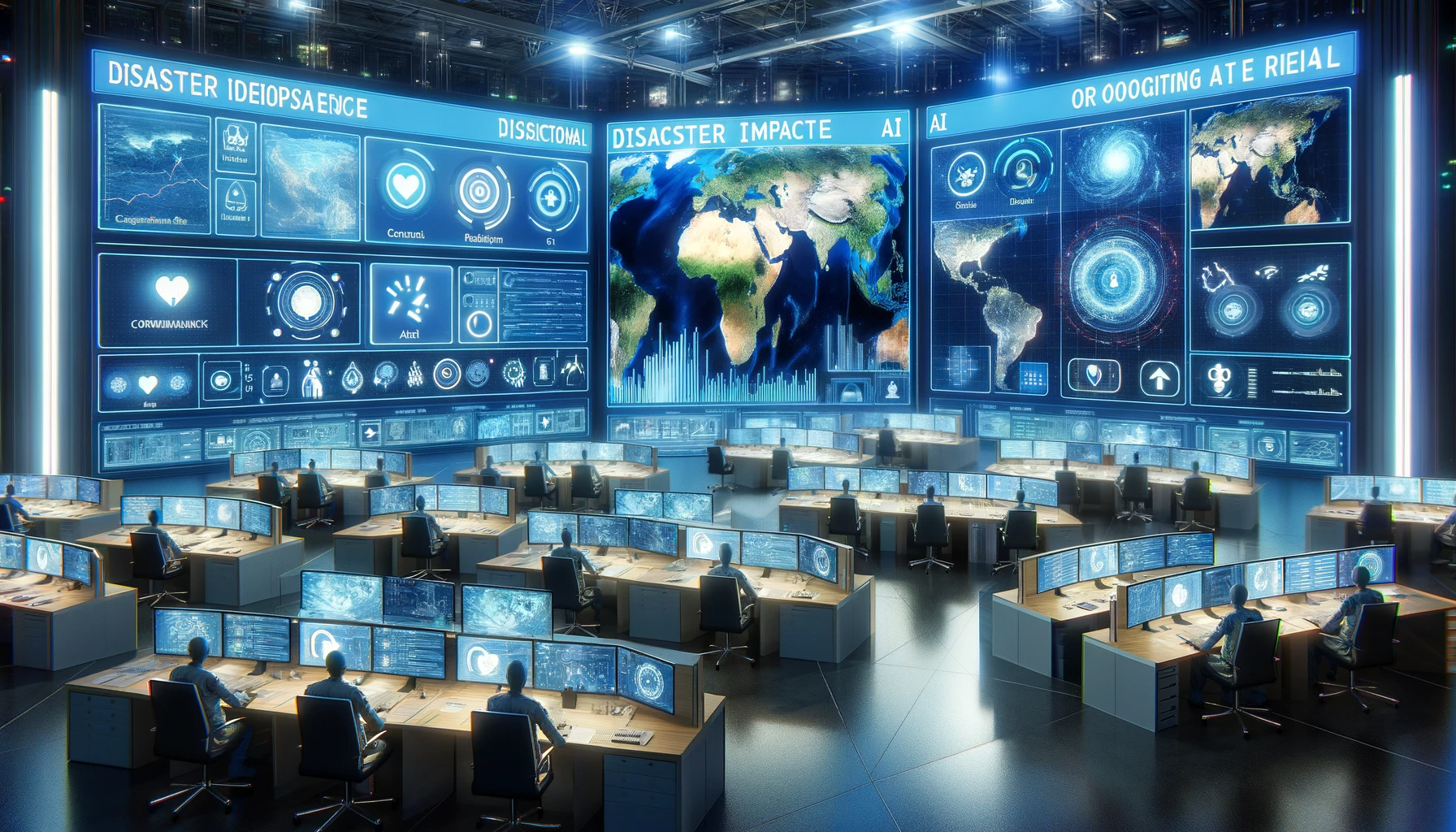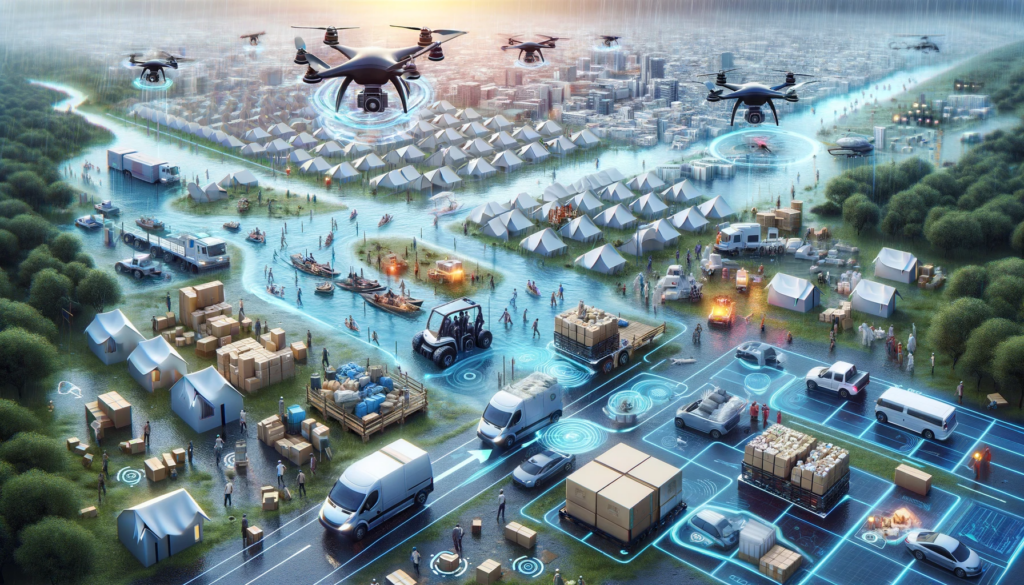In the face of natural disasters and humanitarian crises, the world often witnesses the resilience of humanity as nations and organizations unite to provide aid and relief to those in need. However, the complexity and scale of such events often present overwhelming challenges. It is in these moments of urgency that the integration of Artificial Intelligence (AI) emerges as a powerful ally in the realm of disaster relief and humanitarian aid.
Predictive Analytics for Disaster Preparedness:
One of the fundamental aspects of disaster response is the ability to anticipate and prepare for impending calamities. Here, AI has stepped into the forefront, offering predictive analytics that can revolutionize disaster preparedness efforts. Through the utilization of historical data, meteorological information, and machine learning algorithms, AI can analyze patterns and trends to predict the likelihood and severity of natural disasters such as hurricanes, earthquakes, floods, and wildfires.
For instance, AI-driven early warning systems have become invaluable tools in identifying potential disasters before they strike. These systems can provide advance notice to vulnerable communities and allow for timely evacuation and resource allocation, significantly reducing the loss of life and property damage. AI’s predictive capabilities are reshaping the way disaster preparedness organizations approach risk assessment and response planning.
Rapid Response and Resource Allocation:
Once a disaster unfolds, time becomes a critical factor in saving lives and minimizing damage. AI plays a pivotal role in facilitating rapid response efforts and optimizing resource allocation. During the chaos of a crisis, AI-powered algorithms can analyze real-time data, including weather conditions, geographical information, and transportation routes, to determine the most efficient deployment of resources.
For example, AI can help emergency services identify the quickest routes to reach affected areas, assess the availability of medical supplies and personnel, and coordinate search and rescue missions. Additionally, machine learning algorithms can analyze social media and satellite imagery to provide updated information on the disaster’s impact, aiding responders in prioritizing their efforts.
AI-Enhanced Disaster Recovery:
In the aftermath of a disaster, the process of recovery begins. This phase involves rebuilding infrastructure, providing aid to affected communities, and restoring essential services. AI contributes significantly to these recovery efforts by expediting damage assessment and reconstruction planning.
Drones equipped with AI-powered cameras can conduct aerial surveys to assess the extent of damage to buildings, roads, and critical infrastructure. AI algorithms can analyze the collected imagery and data to create detailed damage assessments, allowing organizations to prioritize reconstruction efforts and allocate resources efficiently. AI’s ability to streamline these processes can accelerate recovery timelines and help communities regain a sense of normalcy sooner.
Healthcare and Medical Aid:
Humanitarian aid extends beyond immediate disaster response to include healthcare and medical assistance. In this context, AI offers innovative solutions that improve the quality and accessibility of healthcare services in crisis situations. Telemedicine, for example, leverages AI-driven diagnostics and remote consultations to provide medical care to individuals in remote or disaster-stricken areas.
Moreover, AI-based medical devices can assist in triage, diagnosis, and treatment. For instance, portable AI-powered ultrasound devices can be deployed in the field to assess injuries and conditions, enabling medical professionals to make informed decisions and provide timely care. AI’s role in healthcare during humanitarian missions not only enhances the quality of care but also extends its reach to underserved populations in crisis-stricken regions.
As we delve deeper into the impact of AI in disaster relief and humanitarian aid, it becomes increasingly evident that this technology has the potential to revolutionize the way we prepare for, respond to, and recover from disasters. AI-driven predictive analytics, rapid response mechanisms, and medical innovations all contribute to more efficient and effective disaster relief efforts, ultimately saving lives and mitigating the devastating effects of natural and man-made catastrophes. The transformative power of AI in this field underscores the importance of ongoing research, innovation, and collaboration to ensure that these technologies continue to evolve and benefit humanity in times of need.

Communication and Data Analysis:
In the chaos of a disaster or humanitarian crisis, effective communication and data analysis are paramount. AI steps in to streamline these critical functions, facilitating efficient coordination among responders and organizations.
AI-driven natural language processing (NLP) technologies play a significant role in sifting through vast amounts of textual data, including social media updates, news reports, and emergency hotline calls. These NLP algorithms can extract crucial information, such as the location of affected individuals, emerging needs, and evolving conditions on the ground. Aid organizations can use this real-time data to make informed decisions and adapt their response strategies accordingly.
Data mining techniques enable responders to identify patterns and trends in disaster-related data. For instance, AI algorithms can analyze historical disaster response data to optimize the allocation of resources and personnel in future crises. This data-driven approach ensures that aid efforts are targeted where they are needed most, enhancing the overall effectiveness of relief operations.
AI also plays a pivotal role in enhancing situational awareness. Through the integration of sensors, cameras, and other data sources, AI systems can provide real-time insights into disaster zones. This information is invaluable for responders, as it helps them understand the evolving situation, identify hazards, and assess the safety of affected areas. The combination of AI-powered data analysis and communication tools is a game-changer in the world of disaster relief and humanitarian aid, enabling organizations to respond swiftly and efficiently to ever-evolving challenges.
Challenges and Ethical Considerations:
While AI offers immense potential in the realm of disaster relief and humanitarian aid, it is not without its challenges and ethical considerations.
One of the primary challenges is the need for robust, reliable data. AI models heavily rely on data for training and decision-making. In many disaster-prone regions, data may be scarce or of poor quality. Additionally, biases in historical data can lead to biased AI models, potentially disadvantaging certain groups or communities during relief efforts.
Data privacy and security are paramount concerns. AI systems often process sensitive information, including medical records and personal details of affected individuals. Protecting this data from breaches and ensuring compliance with privacy regulations are critical ethical considerations.
Another ethical concern revolves around transparency and accountability. As AI takes on more decision-making responsibilities, there is a need for transparency in how these decisions are made. People affected by disasters and humanitarian crises have a right to understand the algorithms and processes that impact their lives.
Finally, the potential for AI to automate tasks previously carried out by humans raises questions about job displacement. Balancing the benefits of automation with the impact on local communities and responders is an ongoing ethical dilemma.
Addressing these challenges and ethical considerations requires collaboration among technologists, humanitarian organizations, governments, and communities. Striking the right balance between harnessing AI’s potential and ensuring fairness, accountability, and respect for human rights is essential in the continued evolution of AI in disaster relief and humanitarian aid.
Future Trends and Innovations:
As the integration of AI in disaster relief and humanitarian aid continues to evolve, several future trends and innovations are on the horizon, promising to further enhance the effectiveness of relief efforts:
Autonomous Robotics and Drones:
- Autonomous robots and drones equipped with AI are poised to play a more significant role in disaster response. These robotic systems can navigate complex terrains, deliver supplies, conduct search and rescue missions, and assess damage in areas that may be too dangerous for humans to access. Advancements in autonomy and sensor technology will lead to more sophisticated and versatile robotic responders.
AI-Powered Decision Support Systems:
- Decision support systems powered by AI will become indispensable tools for aid organizations and governments. These systems will provide real-time data analysis, predictive modeling, and scenario planning to assist decision-makers in choosing the most effective response strategies. By harnessing AI’s capabilities, decision-makers can make informed choices swiftly and adapt to evolving situations.
Collaboration and Knowledge Sharing Platforms:
- Collaboration platforms enhanced by AI will facilitate communication and knowledge sharing among various stakeholders in disaster relief and humanitarian aid. These platforms will enable responders, researchers, and communities to exchange critical information, best practices, and lessons learned. AI-driven data analytics on these platforms will help identify trends and emerging needs, fostering a more coordinated and efficient response ecosystem.

As these trends and innovations unfold, it is evident that AI’s influence in disaster relief and humanitarian aid will continue to expand. The synergy between technological advancements and humanitarian principles holds the potential to mitigate the impact of disasters and alleviate the suffering of affected populations worldwide. The future of AI in this field is marked by a commitment to saving lives, promoting resilience, and working collectively to address the world’s most pressing challenges.
